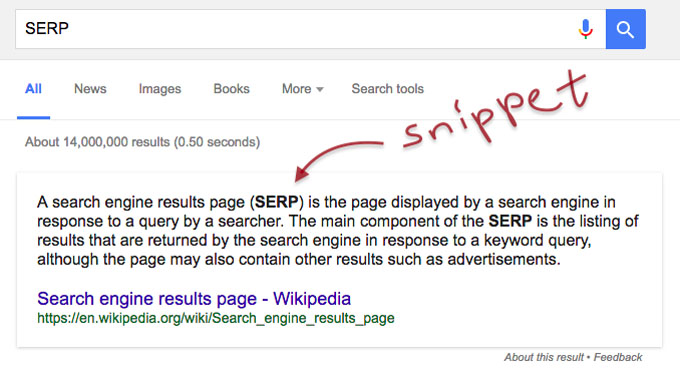Clarification from Google, How Algorithm Chooses Search Snippets
Google updated their search snippets guidance their search snippet documentation to give a clarification about how the algorithm chooses what to use in the search results. Google clarify what influences Google’s algorithm for choosing what to display or visible as the snippet in the search results. This updation may represent a big change in how meta descriptions are written and how content is optimized.
What is Google Search Results Snippets
Google Search Results Snippets is a webpage displayed in the search engine results pages (SERPs). It consists of a title, a URL breadcrumb and a one to two sentence description of what the webpage is about. That last part is called a snippet.
Basically, a snippet is a concise or brief description of what the webpage is about.
Google’s Clarification About Snippet Guidance
Google clarify that the content of the page is the main source of where the snippet comes from. The changes also made it clearer that the structured data and the meta description are not the primary source of the search snippets.
What Changed In Google’s Snippet Documentation?
Google removed a substantial amount of words from the previous version of the documentation.
Below is the new version of the documentation:
“Google primarily uses the content on the page to automatically determine the appropriate snippet. We may also use descriptive information in the meta description element when it describes the page better than other parts of the content.”
Significant Amount Of Content Removed
Google also removed an entire paragraph of content and replaced it with new documentation. Both the removal and the addition dramatically change the message of the documentation.
Below section was removed:
“website owners have two main ways to suggest content for the snippets that we create:
Rich or Best results: Add structured data to your site to help Google understand the page: for example, a review, recipe, business, or event. Learn more about how rich results can improve your site’s listing in search results.
Meta description tags: Google sometimes uses <meta> tag content to generate snippets, if we think they give users a more accurate description than can be taken directly from the page content.”
Google's new wording is as below:
“Snippets are primarily created from the page content itself. However, Google sometimes uses the meta description HTML element if it might give users a more accurate description of the page than content taken directly from the page.”
What Change In Guidance Means For SEO
Many SEO guides that are published online (wrongly) advise that the best way to optimize a meta description is to use it as “advertising copy” and to use “target keywords” in it.
Above advice is 100% wrong and this process is very old and outdated. Adding keywords to the meta description is not important because meta descriptions are not used for ranking and the purpose of a meta description is not to entice clicks from the SERPs
The correct use of the meta description is to accurately and concisely describe and explain about the webpage, period.
The official W3C HTML specification for the meta description outlines the correct use of the meta description:
“The value must be a free-form string that describes the page. The value must be appropriate for use in a directory of pages, e.g. in a search engine. There must not be more than one meta element with its name attribute set to the value description per document.”
Google isn’t interested in displaying search optimized snippets. Google want to show a description of what the webpage is about and Google’s advice on how to write a meta description conforms with the official meta description HTML specification.
This is how Google advises to write a meta description:
“Google will sometimes use the <meta name=”description”> tag from a page to generate a snippet in search results, if we think it gives users a more accurate description than would be possible purely from the on-page content. A meta description tag generally informs and interests users with a short, relevant summary of what a particular page is about.”
Google then describes the content of a meta description using a simile that compares it to promoting something in the form of a pitch:
“They are like a pitch that convinces the user that the page is exactly what they’re looking for.”
Google doesn’t say to write a pitch to use for the meta description. The word “like” is used which signifies a simile, a comparison.
Conclusion
The big conclusion from the updated snippet guidance is that the primary source of the snippet is content and that Google “may” use the meta description. Above all,Google makes it clear that the structured data plays no role in the selection of words to use as a snippet.
What then means for SEO is that the days of packing keywords into the meta description are most definitely over. We should use them appropriately and it may help you better control the snippet that Google uses in the search results.


Comments
nice post